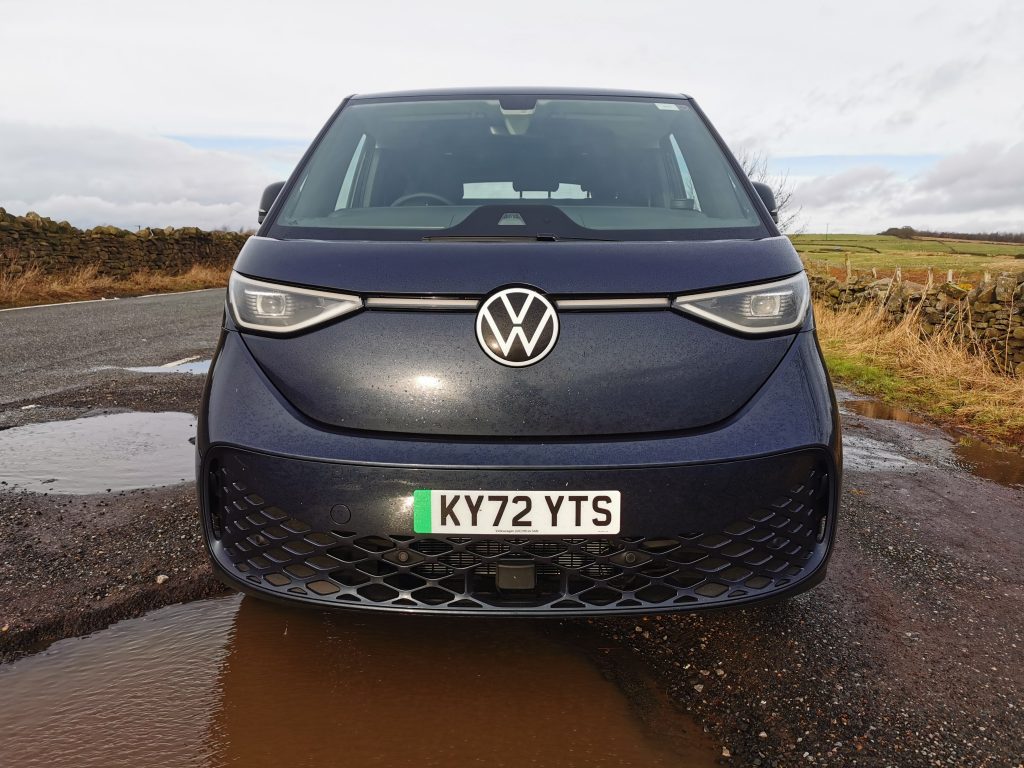Volkswagen ID Buzz Cargo Review
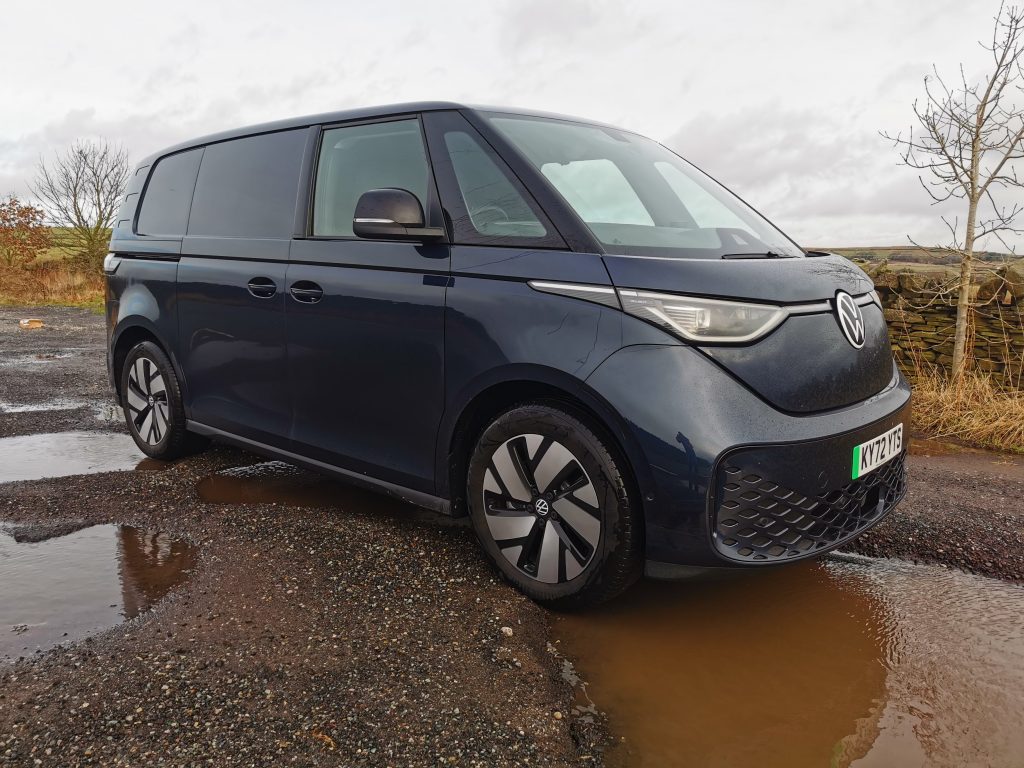
Not unlike another major van manufacturer, Volkswagen has been a little late to the party in the UK with electric vans. There is the ABT e-Transporter but this hasn’t found favour with the van buyer, almost certainly due to its very modest range and payload. There’s also an electric Crafter but this has never officially made it to our shores.
Arriving with a bang, however is the ID Buzz Cargo, a van which, with a combination of retro looks (and more than a hint to its ‘Bulli’ T1 predecessor) and almost futuristic styling caused more than a few jaws to be dropped when first unveiled. Driving the test van around for a week caused many pedestrians to stop and stare and drivers to take their eyes off the road for a little longer than advisable. Love it or hate it, this van is a real head turner.
So where does it fit? From a loadspace perspective it’s smaller than a Transporter, but bigger than a Caddy Cargo Maxi. You’ll struggle to think of a van to compare it to, the only one immediately coming to mind is the Maxus eDeliver3. Volkswagen could potentially have played a master stroke here, a van that would always appeal to the image conscious artisan small business for example that needs something a little bigger than a ‘small’ van but which doesn’t require the loadspace a Transporter offers.
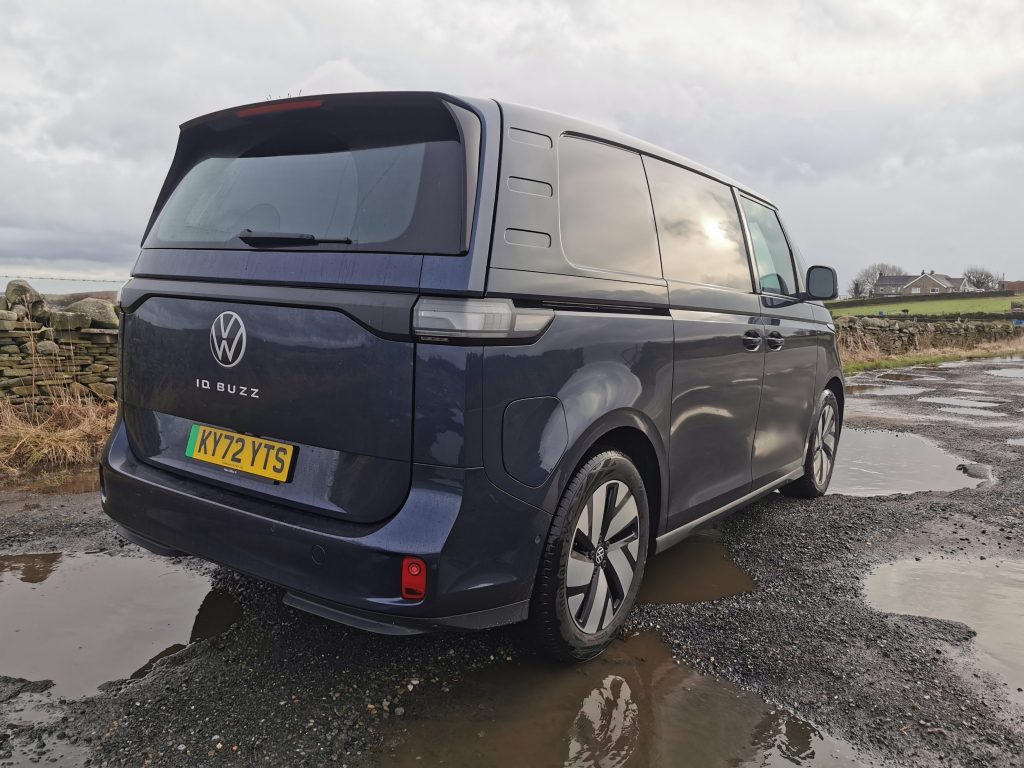
On The Outside
Where do you start? At first glance, the ID Buzz looks almost like the old forward control vans with its steep sloping bonnet. The retro look smacks you in the face, but with narrow LED headlights connected by an illuminated strip, the segue into ultra modern electric vehicle styling is almost seamless. Stand to the side and, in the Commerce Plus model tested, the bi-colour diamond cut 19” alloy wheels are show stoppers in the world of vans and the rear, with its spoiler at the top of the tailgate and wrap-around light units compliment the rest of the visually dramatic styling.
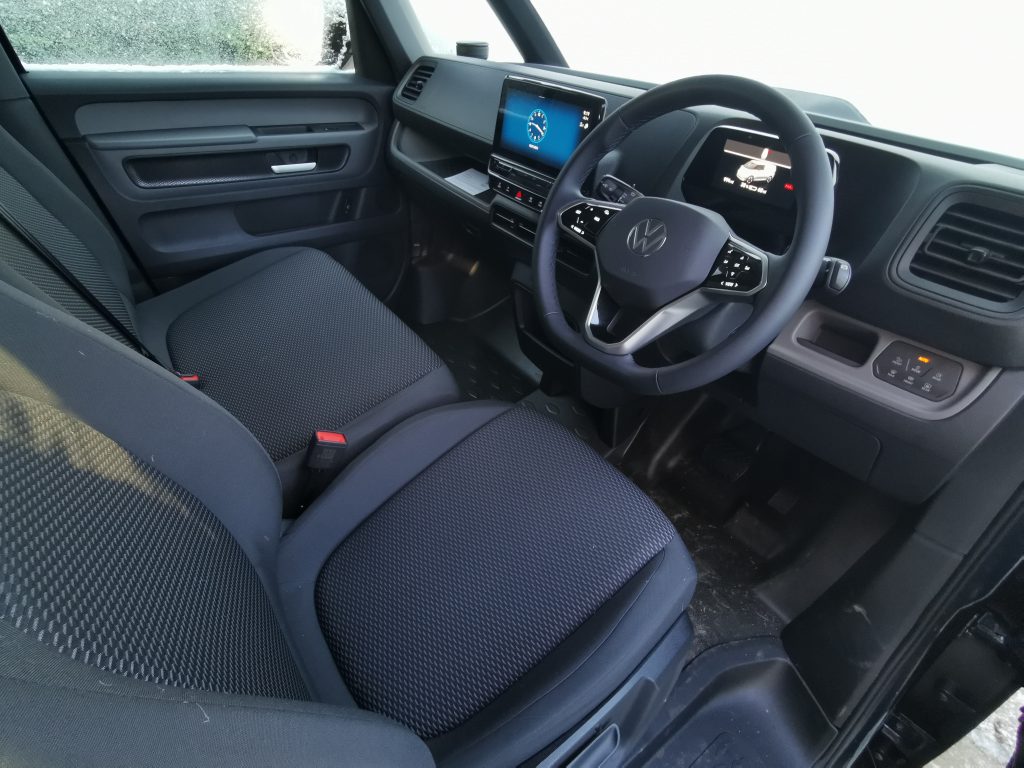
In The Cab
As you’d expect, the dash is dominated by screens, the main, centrally mounted unit measuring 10” providing a multitude of controls, from the DAB radio, Bluetooth, navigation and AppleCarplay and Android Auto smartphone integration to system elements including drive mode, lighting, heating and cab pre-conditioning. The screen in front of the driver provides information such as speed, battery charge and a summary of navigation guidance.
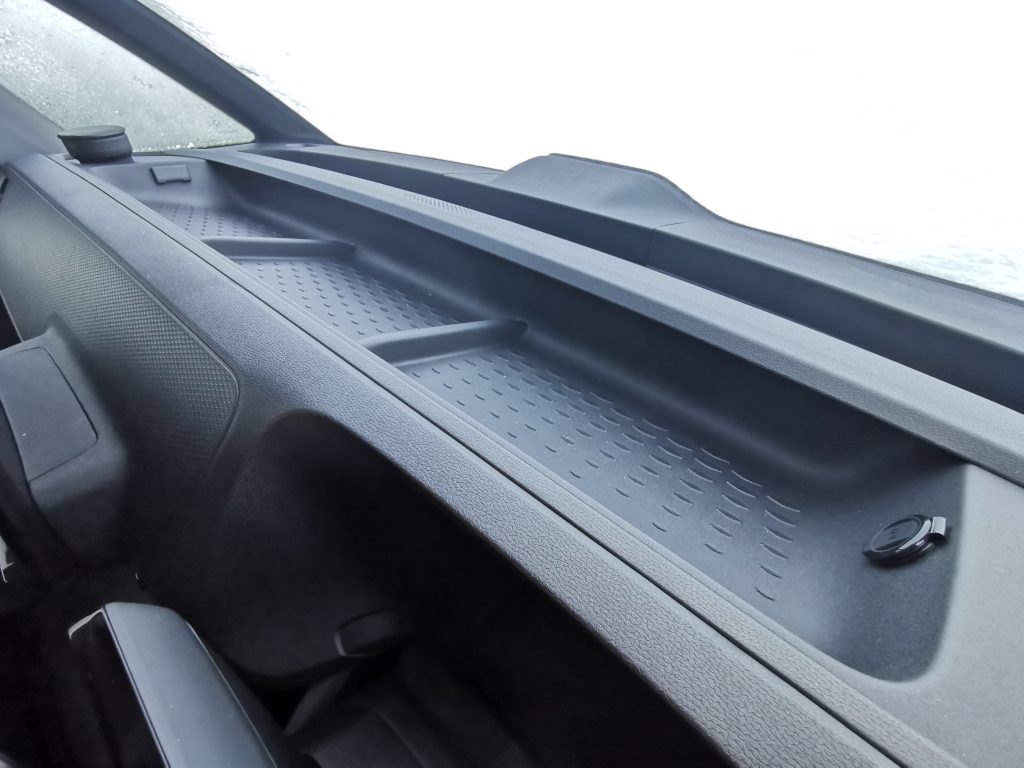
The dash top is huge, providing plenty of space for storage, with a 12 volt outlet on the drivers side and a USB socket at the passenger end. There’s also a USB socket on the inside of the passenger door, further evidence of the attention to detail taken when this van was designed. There are other areas of in-cab storage and, whilst the door pockets won’t take a 2 litre coke bottle, they are reasonably deep.
Standard equipment in the Commerce Plus model includes a heated drivers seat, air conditioning, a heated windscreen, satellite navigation, adaptive cruise control, rear view camera, front and rear parking sensors and various driver assistance and safety features.
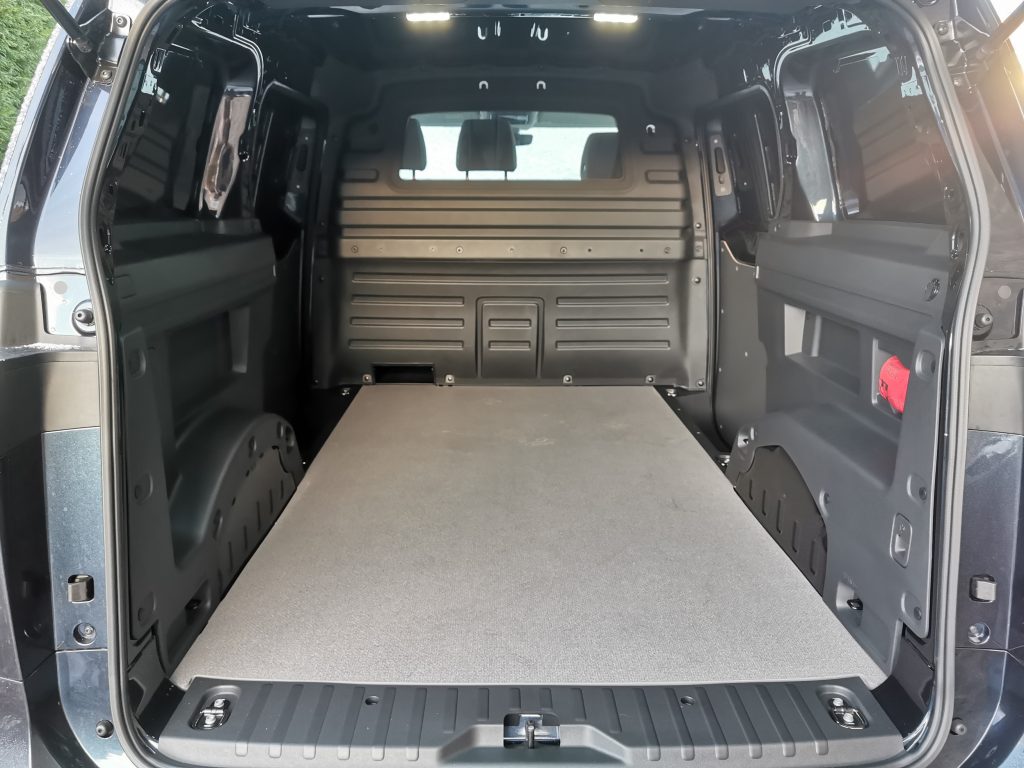
The Loadspace
The standard door configuration is twin side load doors and a lift up tailgate. The load volume is 3.9 cubic metres (Caddy Cargo Maxi being 3.7 cu/m with Transporter SWB measuring in at 4.3 cu/m) and the load length is 2208mm. Payload is 592 kgs, nowhere near class leading for an electric van but Volkswagen is probably safe in assuming that the majority of ID Buzz customers won’t be loading a pallet of bricks in the back.
LED lighting makes loading and unloading easy in poor light, and the van is protected by a wooden floor with a slip resistant surface. There’s a bulkhead, as you’d expect, but you might not have foreseen the glazed section allowing the driver to theoretically see through the tailgate window via the rear view mirror. In practice, this view is mostly obscured by the passenger seat head restraint.

The Electric Stuff
The 204PS electric motor drives the rear wheels and is fuelled by a 77kWh battery. This gives the van the ability to accelerate to 62mph in 10.2 seconds, and reach a top speed of 90mph, unlike many electric vans which are restricted to preserve range. Speaking of range, the WLTP Combined test cycle gives an official figure of 254 miles from a fully charged battery pack. Charge times are stated as 7.5 hours from an 11kw 3-phase wallbox, and a 170kW DC rapid charger will get you from 5-80% in half an hour.
On The Road
There’s the traditional push button keyless ‘start’, but to select drive, a steering column mounted stalk is twisted. This is something I quickly got used to, and the ability to change from drive to reverse without reaching down to a centre console soon becomes appreciated.
As per the figures, acceleration is more than brisk and, of course, silent. On the open road the only sound evident is tyre noise – this isn’t at all excessive but with the manufacturer having reduced all other noise intrusion to almost zero it’s the only sound you’ll notice. Build of the highest quality quickly becomes evident, with absolutely no squeaks or rattles. The van drives incredibly well with steering having just the right amount of feel, and road manners are impeccable when the van is pushed.
The driver’s seat is probably the most comfortable I’ve ever encountered and, although I’m usually very critical of the driving position found in some vans, there were absolutely no issues in the Volkswagen. The only problem I came across was one of visibility. Although the deep windscreen offers a great forward view there’s a small ‘quarter’ window at the front of the drivers door, and the fact that there is an obstruction from the dividing pillar meant that I constantly found myself moving my head back and forth when manoeuvring. It’s not a major issue, but I found it a little annoying at times.
The range remaining indicator seemed a little optimistic, with most drives (in daylight, good weather and unladen) reducing the mileage left by significantly more than that actually covered. Selecting drive mode ‘B’ assists in recovering energy when descending gradients, often almost eliminating the need for the brakes.
Conclusion
The driving experience is excellent. The van looks fantastic, it’s powerful, has a great range and build quality is second to none.
My only concern for Volkswagen is the size of the market. Due to its almost niche sector, the van is unlikely to appeal greatly to fleets, and there’s a question mark for me over the demand that dirty trades might provide, especially with the low payload. Are there enough customers who are prepared to pay handsomely (the van isn’t cheap) for a vehicle that they’re likely to want to look after and protect as they would a premium car? I’ve also some concerns about production levels – if predicted residual values fall this is also going to be an expensive van to lease.
However – the acid test. Would I buy one? Providing I didn’t need to carry much, absolutely, yes, I would.
